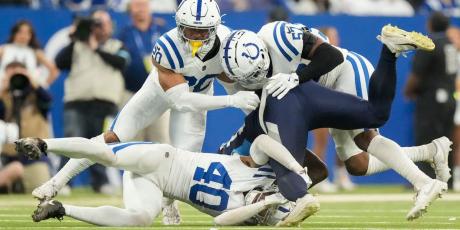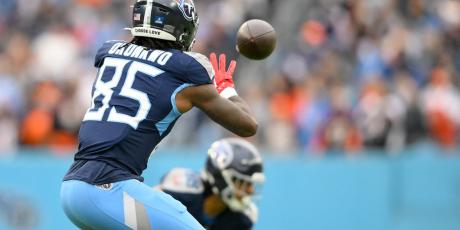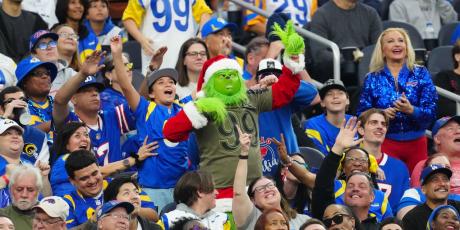The Case for Quarterback by Waiver Wire: Part 3

Creating a steady foundation on which to build our unorthodox – but effective – quarterback by waiver wire approach requires identifying signal callers slated for a spike in opportunity.
Why, you might ask, should we be so very fixated on late-round quarterbacks who will see an increase in pass attempts this season? The answer is a straightforward one: this opportunity spike hasn’t been baked into their average draft positions.
Put simply, their true fantasy football value isn’t reflected in their current ADPs. Your scheming league rivals and fantasy nemeses will undervalue these guys. They’re doing it wrong.
This is the third and final part of my pre-season series on the QBBWW system (Part 1, Part 2). I'll be writing a weekly column here at 4for4 tracking my QBBWW plays and recommending weekly QB pickups. I used QBBWW to great effect in 2012, and with a little foresight and sober decision making, you too can rack up quarterback fantasy points without paying a steep price for an elite signal caller. Keeping a close eye on strength of schedule is also a key to this little game.
Identifying quarterbacks who will throw more than ever in 2013 doesn’t mean you’ve found your every-week plug-and-play starter, as the QBBWW approach demands that we seek and exploit favorable match-ups. There are more than a couple late-round signal callers who have fairly easy schedules, as we’ve already discussed.
Opportunity – in the form of more carries for a running back or more targets for a wide receiver – is half the equation for fantasy football success (the other half being talent, of course). Below is a friendly reminder that the NFL’s move toward pass-heavy spread offenses has made the QBBWW system viable in recent years.
| Year | 10 QBs with Most Pass Attempts | 10 QBs with the Fewest Passes |
|---|---|---|
| 2009 | 30.7 attempts per game | 27.1 attempts per game |
| 2012 | 38.6 attempts per game | 29.5 attempts per game |
We should remain flexible in how we use the QBBWW system. Without drafting undervalued late rounders though, we’ll often be in a tight spot, sometimes stuck without a cushy match-up.
I’ve found two quarterbacks whose opportunity spike has seemingly not been incorporated into their ADPs: Jay Cutler and Alex Smith.
Jay Cutler
Probably if you’ve ever drafted Cutler as your every-week fantasy starter, you’ve rarely used his name in a sentence without a string of searing curse words. Your fury is justified.
Without looking into why Cutler – an immensely talented thrower – has proven such a debilitating fantasy migraine over the years, we can’t understand why he might be a terrific value in 2013.
Let’s take a quick look at Cutler’s pass attempts since coming to Chicago in 2009.
| Year | Pass Attempts |
|---|---|
| 2009 | 555 (4th among QBs) |
| 2010 | 432 (20th among QBs) |
| 2011 | 315 (26th among QBs while missing 6 games) |
| 2012 | 434 (24th among QBs) |
Cutler, over the past three seasons, has been the anti-Matthew Stafford, throwing a maddeningly low number of passes in uncreative, uninventive schemes that have capped his fantasy value. Cutler is far from the efficient fantasy machine Robert Griffin III and Russell Wilson proved to be in 2012; Cutler needs volume to be a reliable fantasy asset.
The 2009 season, an outlier in Cutler’s time as a Bear, saw Smokin’ Jay finish as fantasy's 11th highest scoring quarterback. It’s easy to forget, with all the white-hot Cutler hate that permeates fantasy football, that he finished as a top-3 quarterback in 2008, when he threw a career high 616 passes.
The 555 passes Cutler chucked that year would’ve put him 10th in pass attempts in 2012, so it’s far from unreasonable to expect Cutler to surpass that high-water mark (in Chicago) with pass-happy Marc Trestman at the helm.
Trestman, whose pass-heavy attack has torched the CFL in recent years, wasn’t shy about tossing the rock around the proverbial yard during his days as an offensive coordinator for the San Francisco 49ers, Arizona Cardinals, and Oakland Raiders.
| Team/Year | Pass Attempts Per Game |
|---|---|
| San Francisco 49ers 1995 | 40.3 |
| Arizona Cardinals 1998 | 34.3 |
| Arizona Cardinals 1999 | 34.9 |
| Arizona Cardinals 2000 | 34.6 |
| Oakland Raiders 2001 | 34.6 |
| Oakland Raiders 2002 | 38.7 |
| Oakland Raiders 2003 | 32.6 |
Trestman, during his seven years as offensive coordinator, called 35.7 passes per game. And now for a bit of cherry picking: In Trestman’s three pass-heaviest seasons, his quarterbacks threw 37.9 times a game.
That second number would give Cutler eight more weekly attempts than his career average, or 96 more pass attempts over the course of a season (Trestman’s overall average passes per game would lead to 64 more attempts for Cutler). To overlook that sort of increase based on preconceived notions and long-held dislike of Cutler would be, to put it kindly, foolhardy.
No one can be sure if Trestman will trust Cutler enough to throw the ball 619 times, as he did with Rich Gannon in Oakland 11 years ago, but it’s a safe bet that Cutler will eclipse the 500-throw mark by a significant margin.
Trestman said in an interview with the Chicago Tribune that Cutler “has the power basis to make all the throws. He has an inventory of passes. He can drop it in, drive it in, slide it in, he can slow it down.”
Cutler, available as the 17th quarterback off the board (11.08 ADP), could be among the most irresistible values of 2013.
Alex Smith
It’s been argued, and perhaps for good reason, that Smith has never been asked to throw all that much because his skill set is that of the prototypical game manager. He lacks a rifle arm, and outside of underneath passes to backs and tight ends, he’s never been incredibly accurate.
Smith has seven touchdown passes of more than 20 yards since 2011. Wilson, for example, had nine in his rookie year alone.
In building the foundation of our 2013 QBBWW system, we shouldn’t be fixated on quarterback shortcomings as much as their expected opportunity to fill up the stat sheet on Sunday afternoons. And unless Chiefs head coach Andy Reid drastically alters his offensive approach during his first year in Kansas City, Smith is going to see a massive jump in pass attempts.
That’s a luxury Smith never had during his 80 games as the 49ers’ starting quarterback. He averaged 27.2 pass attempts per contest there.
Here’s a rundown of pass attempts by Reid’s signal callers in Philadelphia, where Reid’s teams were among the 10 pass-heaviest teams seven times since 2002.
| Team/Year | Pass Attempts Per Game |
|---|---|
| Philadelphia Eagles 2002 | 34.2 |
| Philadelphia Eagles 2003 | 30.3 |
| Philadelphia Eagles 2004 | 34.1 |
| Philadelphia Eagles 2005 | 38.8 |
| Philadelphia Eagles 2006 | 34 |
| Philadelphia Eagles 2007 | 36.1 |
| Philadelphia Eagles 2008 | 37.9 |
| Philadelphia Eagles 2009 | 34.6 |
| Philadelphia Eagles 2010 | 35.1 |
| Philadelphia Eagles 2011 | 34.6 |
| Philadelphia Eagles 2012 | 38.7 |
This is all very encouraging. Reid, even during seasons in which he ratcheted back his aerial ways, averaged far more passes per game than Smtih has during his pro career.
Reid’s quarterbacks, from Donovan McNabb to Michael Vick to Nick Foles, averaged 35.3 attempts per game since 2002. Eagles’ signal callers averaged 36.3 passes during Reid’s final five seasons in Philadelphia.
That means, barring a complete and total change in offensive philosophy, Smith could throw around 130 more passes in 2013 than he has, on average, during his NFL career. Smith, in his last full season as the 49ers’ starter, threw 445 passes. That could easily reach the 580 mark in 2013.
Smith is being drafted near the end of the 13th round. He’s the 22nd quarterback off the draft board.
Reid, it should be noted, will push Smith to be aggressive in the Chiefs’ 2013 pass attack – a sharp departure from the extraordinary caution preached by all of Smith’s various coaches in San Francisco.
“It’s a new offense. I would tell any quarterback that comes in new that that’s what you need to do. I’ve told them all that. Go ahead and take your shots and see what you can get away with, within reason,” Reid said in an interview wit the Kansas City Star. “But if it’s a close throw, there are going to be a few of those in the National Football League on game day so you need to know what you can get away with on each route. … If there are close throws, challenge it, see what you can get away with.”






















